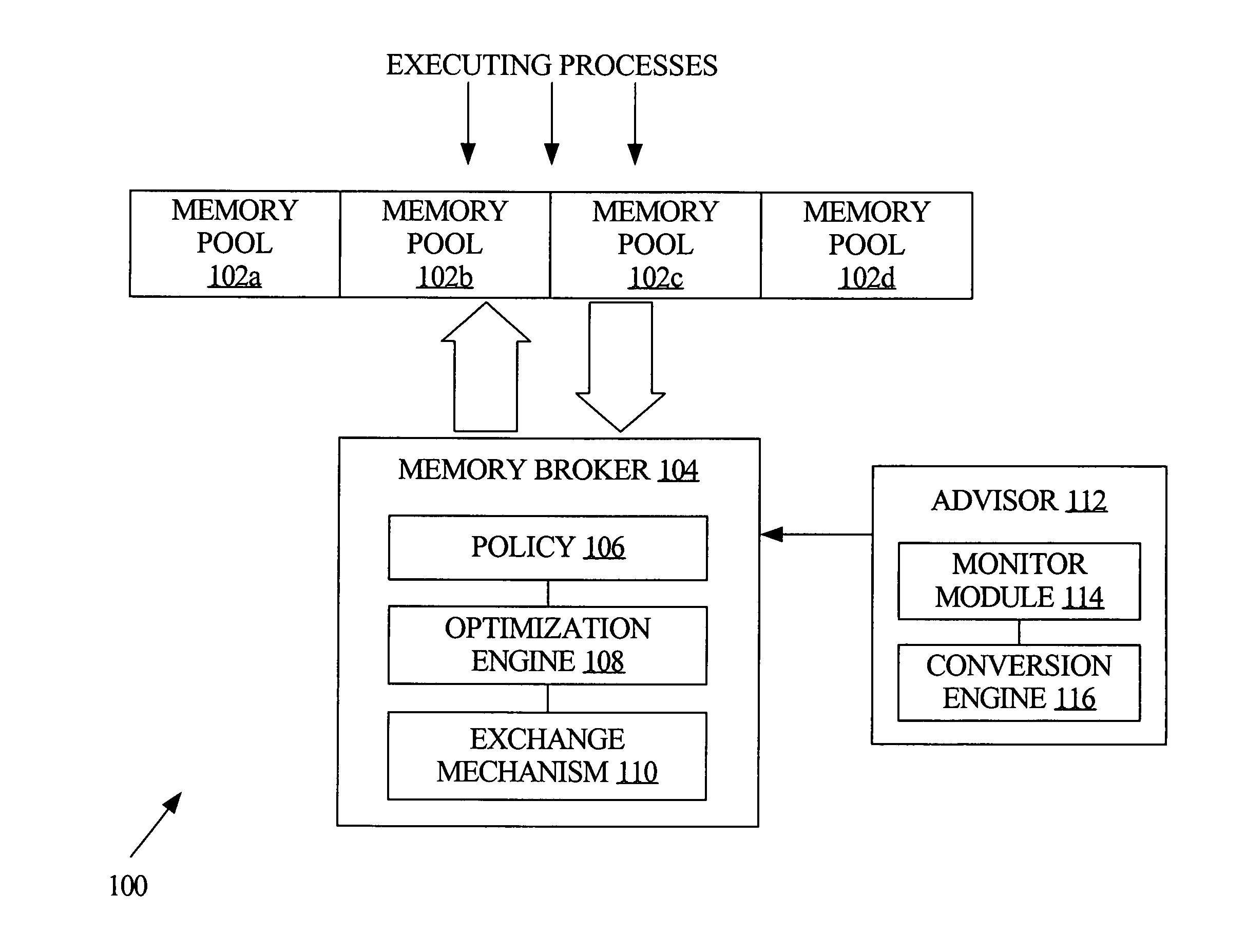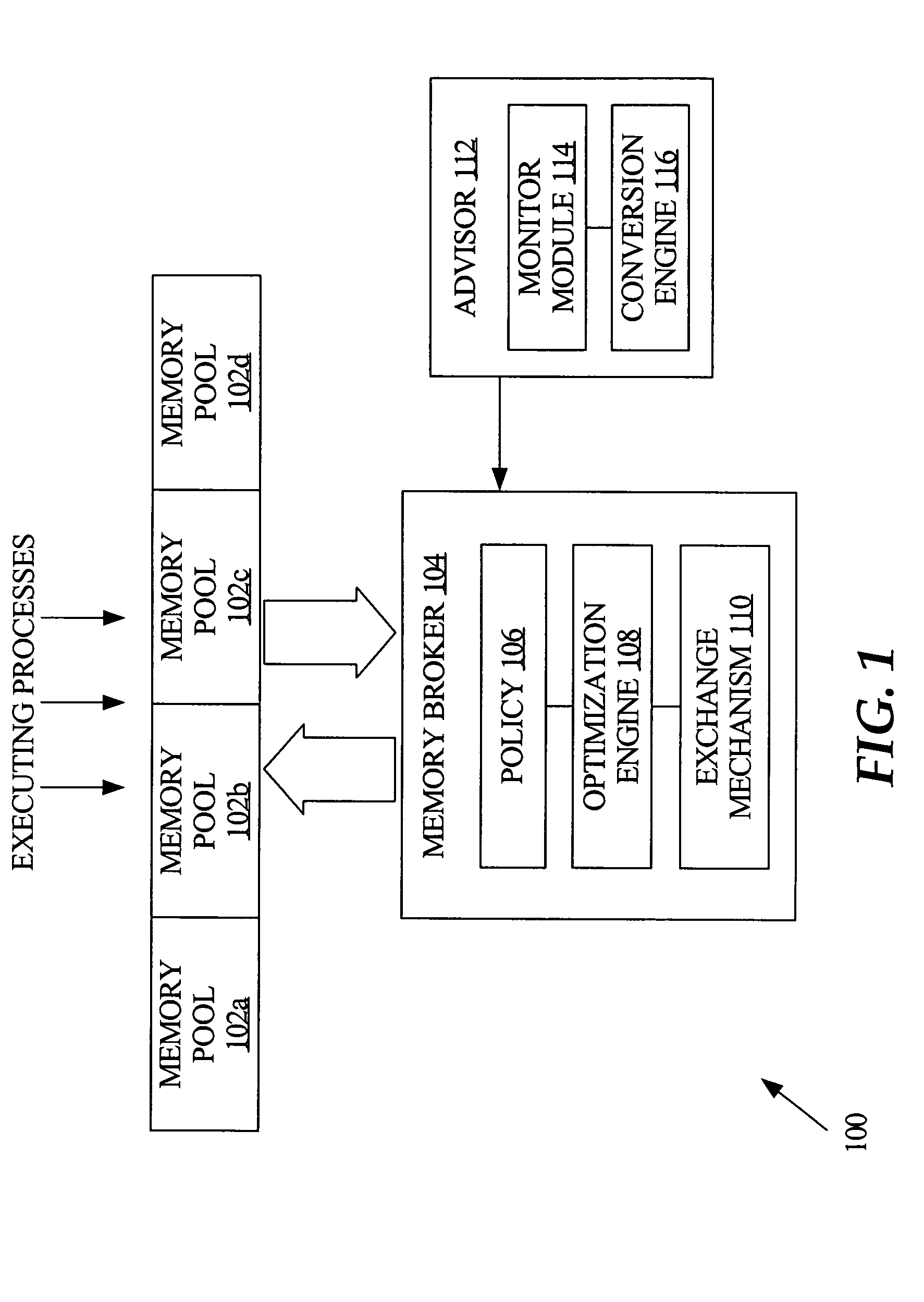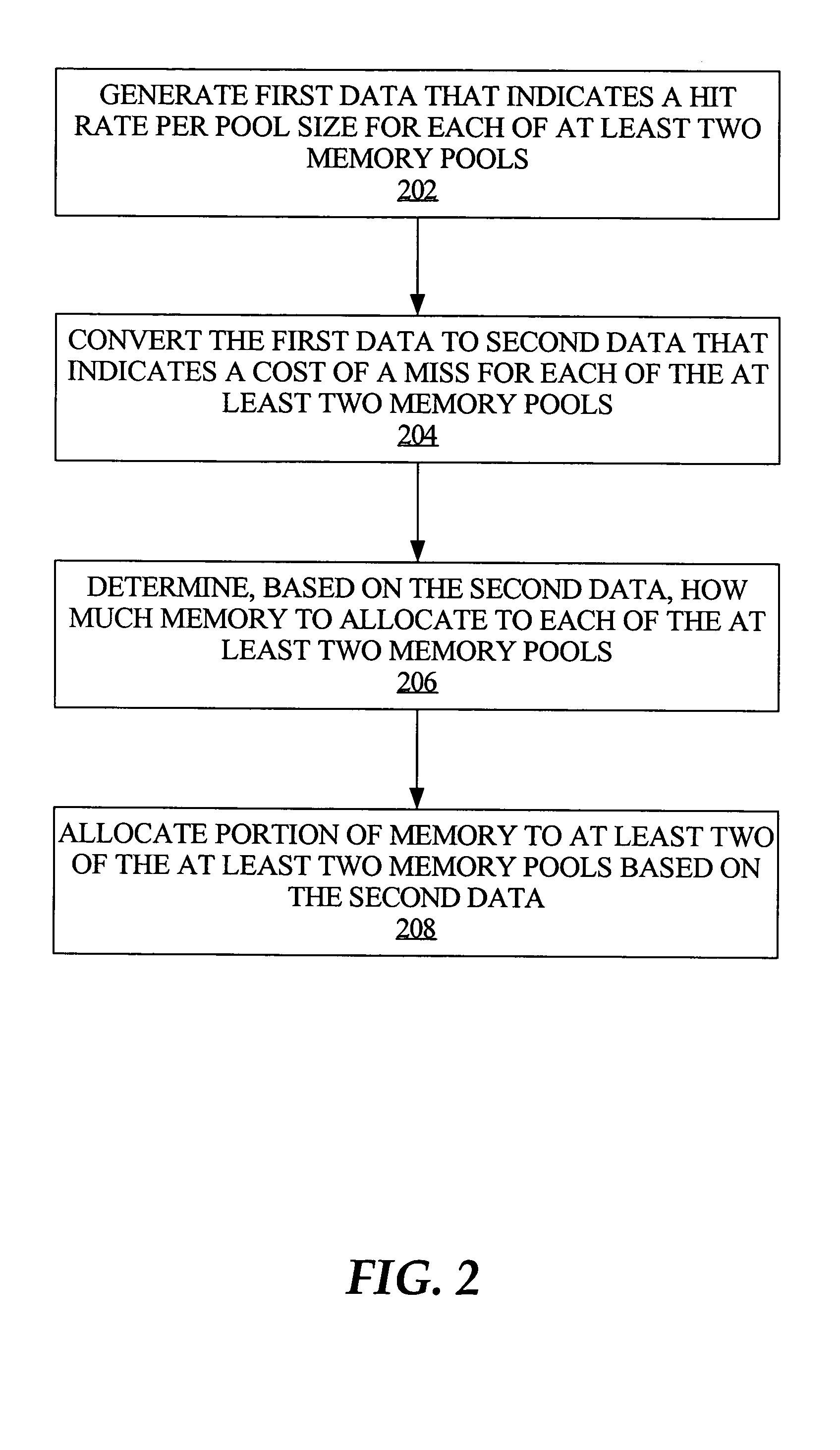Techniques for automated allocation of memory among a plurality of pools
a technology of automatic allocation and memory, applied in the field of memory management, can solve the problems of inability to achieve automatic allocation, prohibitive failure cost, and administrators with few other options
- Summary
- Abstract
- Description
- Claims
- Application Information
AI Technical Summary
Benefits of technology
Problems solved by technology
Method used
Image
Examples
Embodiment Construction
Functional Overview of Embodiments
[0012]According to one aspect, memory is automatically allocated among multiple memory pools. The allocation of memory is adaptive and is optimized across the multiple pools, based on minimizing the time it takes to successfully retrieve a given data item from each of the multiple pools. Generally, optimizing memory allocation involves determining the smallest size for a given pool, with the maximum performance benefit provided by that pool. One embodiment features a system for auto-tuning individual sizes of memory pools within a shared memory. The system includes an advisory mechanism that predicts performance corresponding to different sizes of respective said memory pools, and a memory agent that periodically determines memory pool sizes based on the predicted performance of said memory pools, to optimize performance of said shared memory. In one embodiment, the memory agent determines memory pool sizes optimize performance by determining memory...
PUM
 Login to View More
Login to View More Abstract
Description
Claims
Application Information
 Login to View More
Login to View More - R&D
- Intellectual Property
- Life Sciences
- Materials
- Tech Scout
- Unparalleled Data Quality
- Higher Quality Content
- 60% Fewer Hallucinations
Browse by: Latest US Patents, China's latest patents, Technical Efficacy Thesaurus, Application Domain, Technology Topic, Popular Technical Reports.
© 2025 PatSnap. All rights reserved.Legal|Privacy policy|Modern Slavery Act Transparency Statement|Sitemap|About US| Contact US: help@patsnap.com



